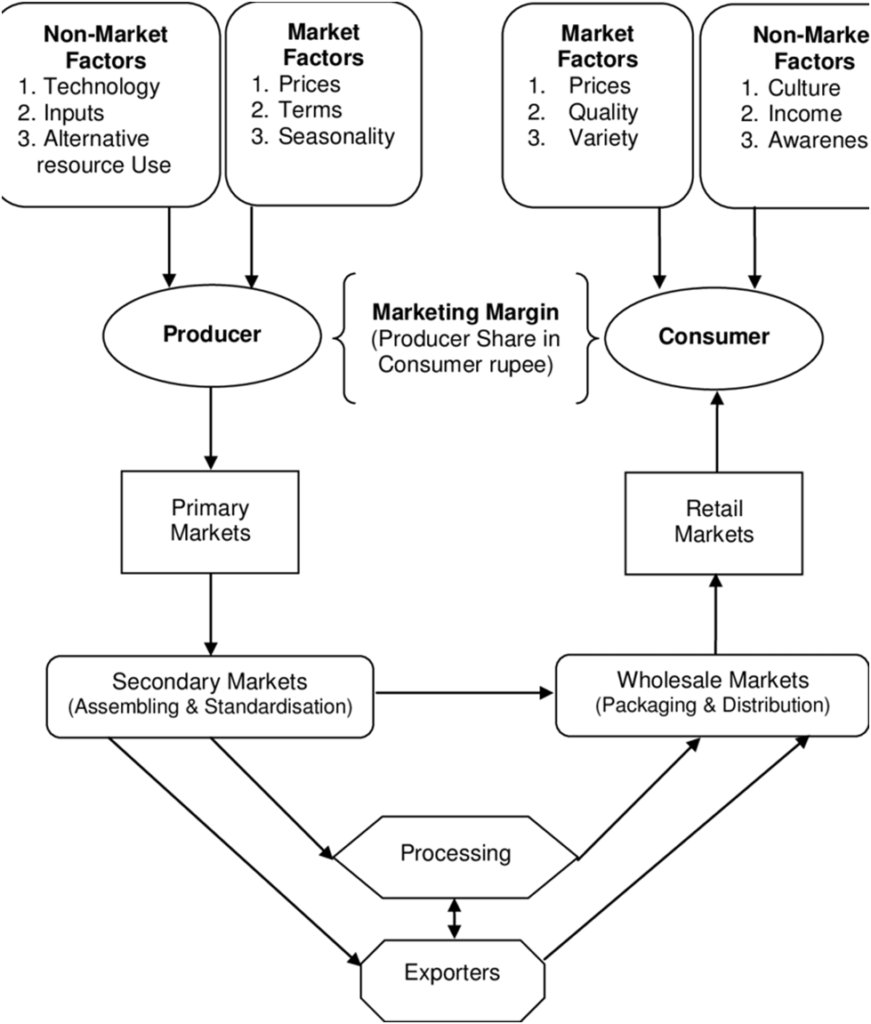QUES . Discuss the measures undertaken by the government recently to improve the marketing of agricultural products in India.
HINTS:

Agriculture remains as the main stay of the Indian economy since times immemorial. Today, agriculture is a critical sector of the Indian economy, contributing to around 17% of the country’s GDP and employing over 50% of the workforce.
Agricultural marketing is mainly the buying and selling of agricultural products. In earlier days when the village economy was more or less self-sufficient the marketing of agricultural products presented no difficulty as the farmer sold his produce to the consumer on a cash or barter basis. Today’s agricultural marketing has to undergo a series of exchanges or transfers from one person to another before it reaches the consumer.
There are several central government organisations, who are involved in agricultural marketing like, Commission of Agricultural Costs and Prices, Food Corporation of India, Cotton Corporation of India, Jute Corporation of India, etc. There are also specialised marketing bodies for rubber, tea, coffee, tobacco, spices and vegetables.
Measures undertaken to improve the marketing of agricultural products
The Indian government has undertaken several measures in recent years to improve the marketing of agricultural products in the country.
e-NAM: The government has launched the Electronic National Agriculture Market (e-NAM) to create a unified national market for agricultural commodities. E-NAM is an online platform that enables farmers to sell their produce directly to buyers, eliminating intermediaries and ensuring better prices for farmers.
Agriculture Infrastructure Fund: The government has introduced the Agriculture Infrastructure Fund (AIF) to provide financial assistance for the creation of agricultural infrastructure such as cold storage facilities, warehouses, and market yards. The AIF aims to strengthen the supply chain infrastructure and reduce post-harvest losses.
Kisan Rail: The government has launched Kisan Rail, a special train service for the transportation of agricultural products. Kisan Rail connects major agricultural centers in the country and provides a cost-effective and efficient mode of transportation for farmers to transport their produce.
PM-KISAN: The Pradhan Mantri Kisan Samman Nidhi (PM-KISAN) is a scheme that provides financial assistance to small and marginal farmers. The scheme aims to provide income support to farmers and enable them to invest in the production of crops and marketing of agricultural products.
Agricultural Produce and Livestock Marketing (APLM) Act: The government has introduced the APLM Act to ensure the fair market price of agricultural produce and livestock. The Act aims to create a competitive and transparent market for agricultural products and prevent farmers from being exploited by intermediaries.
Overall, the Indian government’s measures to improve the marketing of agricultural products have been significant in recent years. These initiatives aim to improve the income of farmers, reduce post-harvest losses, and create a competitive and transparent market for agricultural products.
